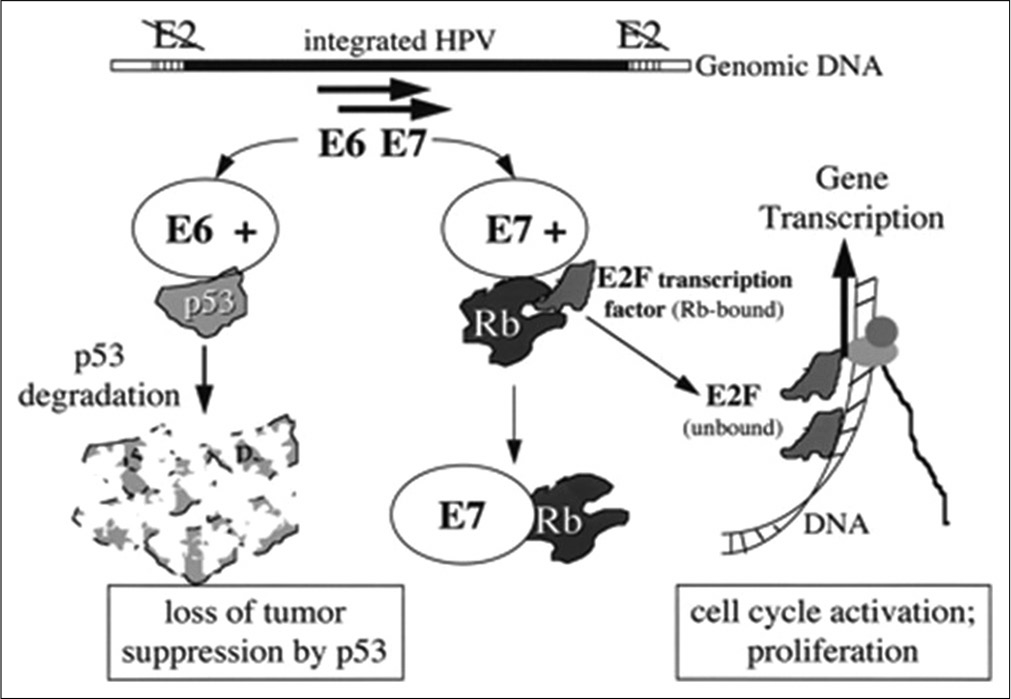Viruses and Cancer
Although cancer is not “contagious” in its strictest sense, there are some viruses that are associated with cancer. In humans, one notable example is the human papilloma virus (HPV). Some strains of HPV cause warts, which are a form of benign tumor. Other strains of HPV can cause cervical cancer.
There are vaccines available for HPV – you may have received one as a tween. They are typically administered around age 11-12.
During infection, the HPV genome can integrate into the genome of a host cell. The HPV genome encodes two proteins, E6 and E7, that affect cells’ normal tumor suppression. When expressed by the integrated viral genome, E6 triggers the degradation of the p53 protein. The loss of p53 makes cells unable to respond to DNA damage or begin p53-mediated apoptosis. E7 binds to Rb, preventing Rb from inhibiting E2F and ultimately destroying E2F as well. Together, these two proteins dysregulate cell division and block the dysregulated cell from apoptosis. This process is illustrated in Figure 21. These actions together lead to infected cells becoming cancerous.

Figure 21. The HPV E6 and E7 oncogenes degrade p53 and Rb, leading to a loss of tumor suppression by p53 and an activation of E2F-responsive genes.[1]
Other cancer-associated viruses act differently. Integration of a viral genome into the host genome can bring a viral promoter close to the coding sequence of a proto-oncogene. This can cause the misexpression of the proto-oncogene. One example of this is seen in birds: avian leukosis virus can insert near the c-myc proto-oncogene, resulting in over-expression of c-myc and the formation of tumors. In humans, the human T-lymphotropic virus (HTLV) infects T-cells and is associated with T-cell leukemia and lymphoma.
Media Attributions
- Figure 21 DNA Repair © Dharitri Bhat14 is licensed under a CC BY-NC-SA (Attribution NonCommercial ShareAlike) license
- Bhat, D. The ‘Why and How’ of Cervical Cancers and Genital HPV Infection. Cytojournal 19, (2022). ↵

